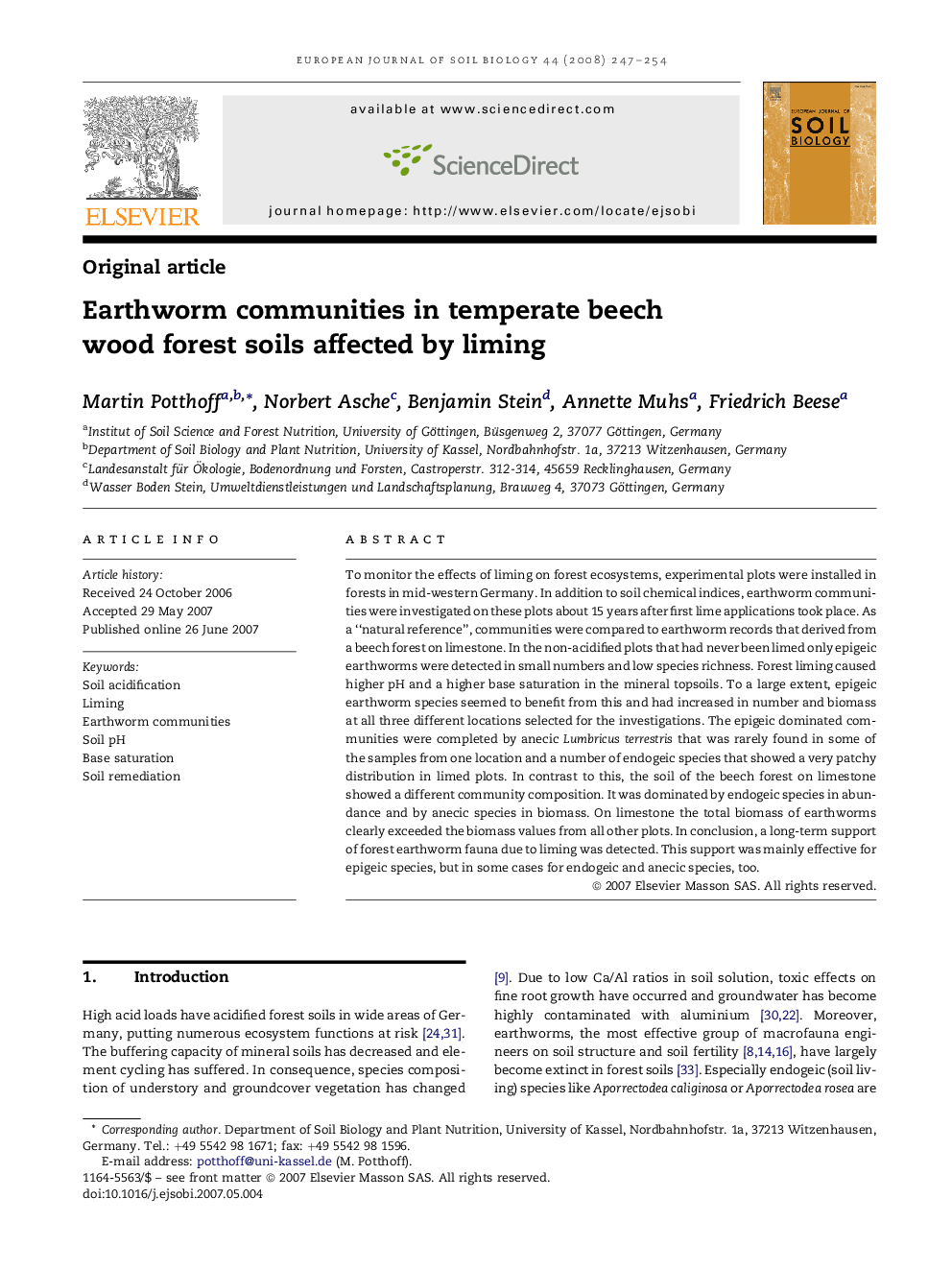| Article ID | Journal | Published Year | Pages | File Type |
|---|---|---|---|---|
| 4392428 | European Journal of Soil Biology | 2008 | 8 Pages |
To monitor the effects of liming on forest ecosystems, experimental plots were installed in forests in mid-western Germany. In addition to soil chemical indices, earthworm communities were investigated on these plots about 15 years after first lime applications took place. As a “natural reference”, communities were compared to earthworm records that derived from a beech forest on limestone. In the non-acidified plots that had never been limed only epigeic earthworms were detected in small numbers and low species richness. Forest liming caused higher pH and a higher base saturation in the mineral topsoils. To a large extent, epigeic earthworm species seemed to benefit from this and had increased in number and biomass at all three different locations selected for the investigations. The epigeic dominated communities were completed by anecic Lumbricus terrestris that was rarely found in some of the samples from one location and a number of endogeic species that showed a very patchy distribution in limed plots. In contrast to this, the soil of the beech forest on limestone showed a different community composition. It was dominated by endogeic species in abundance and by anecic species in biomass. On limestone the total biomass of earthworms clearly exceeded the biomass values from all other plots. In conclusion, a long-term support of forest earthworm fauna due to liming was detected. This support was mainly effective for epigeic species, but in some cases for endogeic and anecic species, too.
